Sports scooters are gaining more and more popularity, turning from a child's mode of transport into an adult means of transportation. The stunt models of scooters, which have various functions, are gaining special popularity. To perform stunt performances, special structural elements are needed that help to make them qualitatively and without risk to health. One of the key such components are pegs or “sliders”.

Features and specifications
Pegs are called special bushings for scooters, which are placed on the outside of the axis of the front or rear wheels. You can use them for a variety of purposes, but in most cases, riders use them as an auxiliary support when sliding and for better balance. These are tubes that are used as a support for stunt manipulations. Perhaps in the future the scope of their application will be wider, because the technical features of this device are constantly being improved. For this reason, even experienced riders are always in search of new solutions to master the new elements.
It’s worth starting with the easiest exercises, and over time, more complex ones will be performed automatically. Riders who have considerable experience in riding scooters should use pegs, for beginners this can result in injuries.
When installing the peg on the rear wheel, one must be careful not to damage the legs, because unlike the additional front elements, they are seen worse.
Using pegs, the usual stretch to the deck is somewhat transformed, so if you jerk or collide, you can fall and get damaged. To avoid this, it is worth taking your foot a little further.

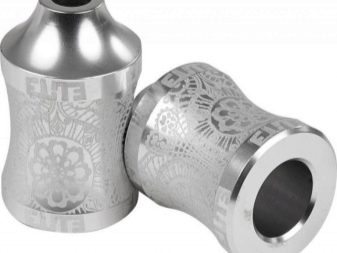
Although this design element helps in performing tricks, it’s easy to catch on. Often, athletes get injured due to the excessive tilt of the steering wheel, since then the pegah touches the asphalt. You need to be careful when scrolling the scooter, you can easily hook the sleeve with your foot, damaging your limb or shoes. In a word, trying to learn tricks, you first need to get used to the presence of additional elements.
Many people also think that riding with pegas is less comfortable, but at the same time it is much easier to perform various jumps and a series of tricks with them, in addition, they give the riding an individual style. In addition, such elements have original design solutions, which also serves as a decoration for the appearance of the scooter. The quality and effectiveness of performing stunts on a scooter is affected by all the characteristics of the peg, which should be taken into account when installing and using them: parameters, the material from which they are made, and the surface coating.
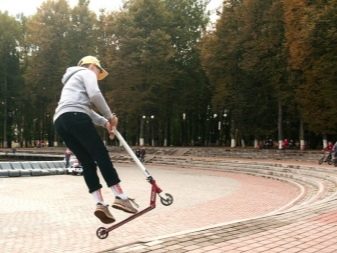

Construction and Views
The classical parameters of peg include a length of 11 cm and a diameter of 4 cm, but each rider can modify them to suit individual needs. The cost, as well as the main characteristics, depends on the material from which the pegs are made. To select the bushings, you must first take into account their properties.
- Titanium they are durable, but have poor glide on a rocky surface.
- Aluminum and steel belong to the most popular and sought after elements and are installed on most of the professional stunt scooters. But these elements tend to make unpleasant sounds. To avoid this, they are lubricated with paraffin. The best combination is a design made of an aluminum core and a steel shell.
- Plastic - A budget option, which, moreover, is characterized by rather good wear resistance. It does not emit unnecessary rattle and squeak. It is mainly used by beginner athletes.

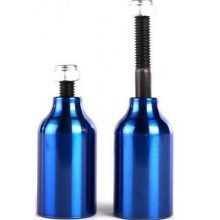
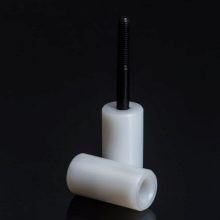
Scooter component manufacturers are constantly making changes and improving the quality of their product using more durable and versatile materials. Pegs don’t just put on the wheel axle, but also fixed with a special anti-spin bolt. It prevents accidental jumping off of additional elements and strengthens them under loads.
How to install?
Having decided and choosing pegs, you need to know how to properly place them on a scooter. Self-installation is not very time-consuming and lengthy, as it might seem at first. You can set pegs in several ways, depending on the deck of the scooter. To simplify the task, quite often wide washers - spacers are also included in the kit. On some models of scooters without them you can’t put pegs. Installation is carried out in such a way that all parts are stationary. As auxiliary tools it is worth using a hexagon and a pipe wrench with a screwdriver.
Before installation, you must also make sure that the length of the bolt is sufficient for fastening the elements (on one or two sides, in accordance with the preferences of the rider).
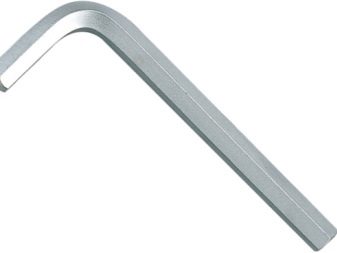

Before installation, it is worth making a fitting. If the sleeve does not rest against the fork, but into the wheel frame, spacers must be used. These washers fill in the extra space and guarantee a firm fit. If the size is suitable, perform the following steps:
- pegs are inserted on a bolt;
- a washer is inserted into the key;
- on the reverse side, the location is fixed with a hexagon;
- the spacer is screwed onto a bolt;
- with the help of a screw, fix the tubular wrench in the required position;
- it is necessary to tighten the bolt with a hexagon to the stop.



With one-way fasteners, the bolt should stick out only on one side, otherwise the ride will be uncomfortable or dangerous.
Before using a stunt scooter, it is very important to check the quality of the peg attachment.
Wherever you ride a stunt scooter, in a park or on the street, you always need to remember safety - both yours and others. Therefore, the serviceability of the vehicle should be in the first place.
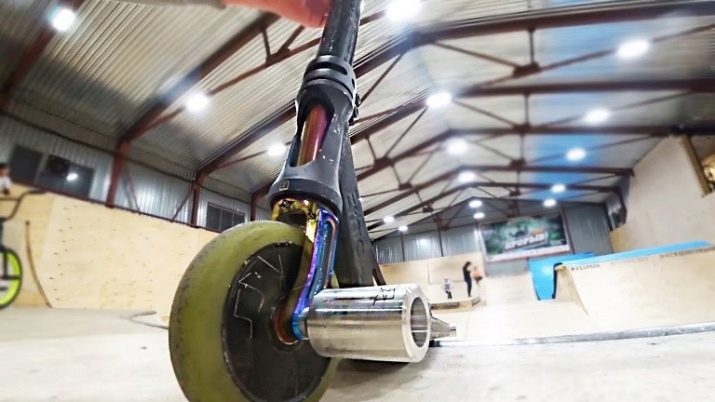
On how to install pegs on a stunt scooter, see further.










